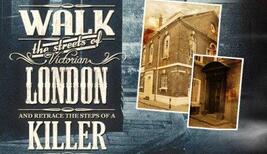Doctors as suspects in the case of "Jack The Ripper" ?
In 1888 many British citizens were prepared to believe that a doctor "had blood on his hands".
Doctors moved freely in the criminal districts of major cities. They needed corpses for medical research and this stimulated a vibrant clandestine market in dead bodies for dissection. And their callous treatment of defenceless female patients - especially the forced examination of prostitutes - had made them popular folk devils. Doctors may enjoy a healthy reputation today, but in the 1880s, many Britons were all too receptive to accusations that the Ripper was a member of the medical profession.
One of the first medical doctors to come under suspicion was Dr D'Onston Stephenson. He was believed to have contracted venereal disease from prostitutes and to be a Satanist - giving him the perfect motive for removing his victims' internal organs. Stephenson was also a magician, which served to explain his regular escape from detection.
The American quack-doctor Francis Tumblety was named as a suspect by one senior Victorian policeman - and, given that Tumblety was a violent misogynist with a penchant for collecting body parts, that's hardly a surprise. He escaped to the USA before the police could arrest and interview him. The British police asked for his extradition but the US government refused because, they said, there was not enough evidence against him.
Queen Victoria's surgeon Sir William Gull, who had been close to the monarchy since the early 1870s, has also been cited as a Ripper suspect, either as a lone assailant or as part of a wider conspiracy to protect the Queen's grandson Albert.







